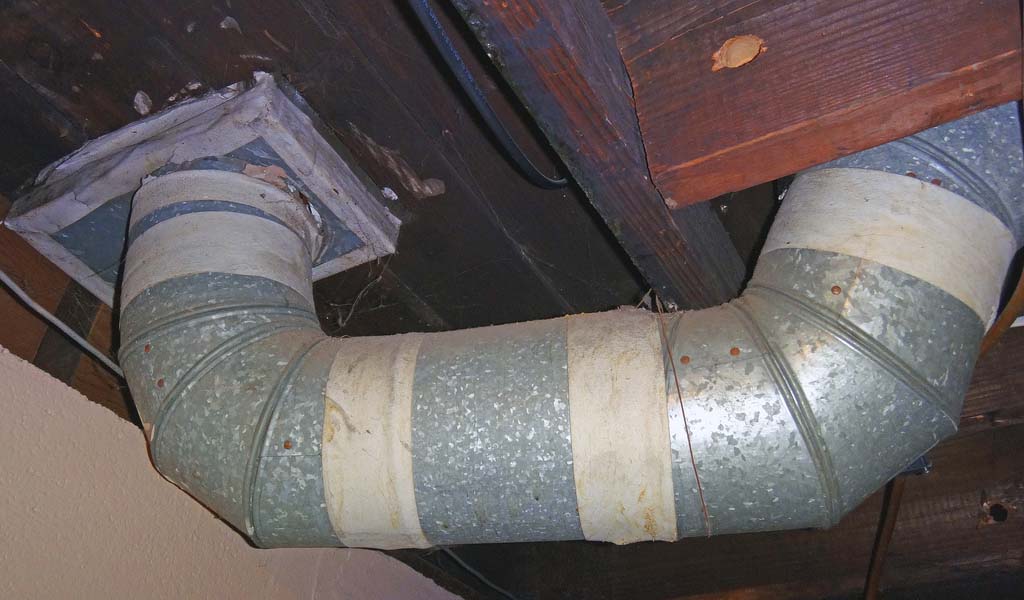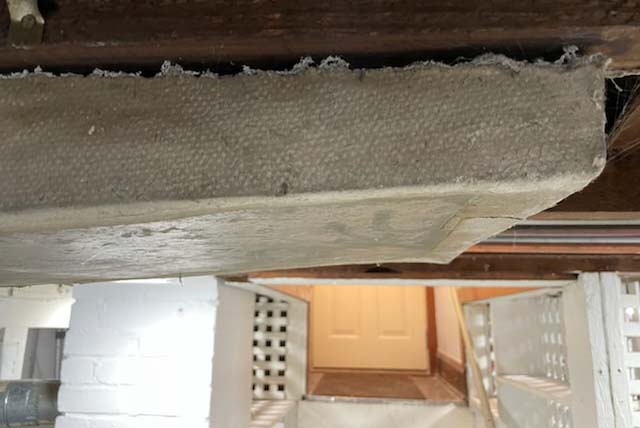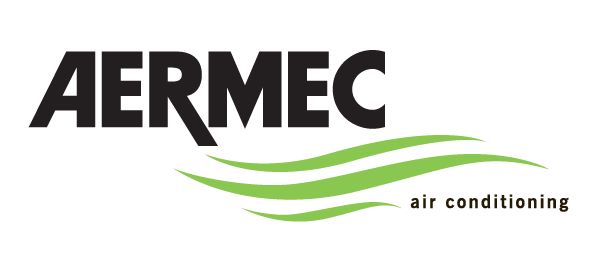✕
Trained to identify the varying types of asbestos used in old buildings, Matt Mountain of Mountain Duct Cleaning knows what he’s looking for. Whenever he identifies what he calls “suspect asbestos,” he tells homeowners and backs away from the project so that remediation professionals can step in.
“My opinion is that it should be addressed before cleaning the duct work,” Mountain said, noting the most common sources of asbestos are wrap and tape around duct seams. It can also be inside the register boots, and some old, sub-floor duct is even made out of a mixture of asbestos and cement called transite.
“What we do, we’re sending high pressure air through the duct system, we’re causing a lot of vibrations and agitation within the duct system, so we don’t want to risk putting any of those small little particles out into the air,” Mountain said, adding that he has customers and a team to look out for. He said some duct cleaners will clean transite, as it is usually in good shape unless the home has settled or someone has drilled into the duct. But high-pressure cleaning implements can still jostle the mineral loose.
HVAC and Duct Cleaners Contractors’ Contaminant Risks
An individual’s risk of developing asbestosis or mesothelioma increases the more they’re exposed to the mineral contaminant. This puts any duct cleaner or HVAC technician who handles suspect asbestos frequently at risk. Mountain said licensed abatement companies have the proper tools and insurance policy to handle the mineral; whereas non-licensed contractors do not.
“We want to see an invoice from an actual licensed asbestos abatement company. I know some HVAC companies might come and cover it up themselves with mastic. We just stay really far to the end of, we don’t want any of that liability on our company,” Mountain said.

MASTIC OVER TAPE: While some HVAC contractors could cover asbestos-containing tape with mastic, Mountain Duct Cleaning requires an invoice from a licensed abatement company before they can begin work. (Photo courtesy of Mountain Duct Cleaning)
Homeowners often don’t want suspect asbestos tested, because if it comes back positive, regardless of successful remediation, they’ll have to disclose asbestos whenever they sell.
But if the problem, for example, is one branch of transite ductwork, Mountain said he’d offer to connect them to a HVAC contractor to cut the duct off from the furnace and install a mini split or some other solution in the affected area.

TRANSITE: Old, sub-floor duct in homes throughout the Midwest are sometimes made from a concrete asbestos mix called transite. (Photo courtesy of Mountain Duct Cleaning)
“We give them our honest opinion. We say this is what we suspect this might be. It’s really on them at that point, to bring the appropriate contractor in,” Mountain said, adding he works with abatement firms to clean duct work during remediation. They refer business to each other, as duct cleaners are part of the abatement process if the particles have the potential of getting into the air in the conditioned space.

SUSPICIOUS: Ductwork wrapped with materials that may contain asbestos should be abated by a remediation contractor before cleaning. (Photo courtesy of Mountain Duct Cleaning)
Removing Asbestos, Lead Particles from Ductwork
Old home remodeling carries the risk of knocking asbestos particles into the air; they then settle in ductwork and make the remodeled home a vector for long-term exposure. The same is true of lead. National Air Duct Cleaners Association (NADCA)-certified cleaners like Mountain have a tried-and-true process for cleaning duct that addresses these mineral and metal contaminants in old insulation and paint.
“We’re closing things off. We’re containing the system while we’re doing the duct cleaning. We’re working under constant negative pressure. Our vacuum equipment is all HEPA filter, and it’s designed to pull in particles like that and not release them back into the home,” Mountain said. “If you have good processes, and if you have good equipment, you should already be set up to handle any of those contaminants.”
He recommends consulting with abatement firms on disposal and equipment cleaning, as well as room isolation.
“There is a little bit extra that you need to be doing. But we should be cleaning our equipment to make sure we’re not cross contaminating between jobs. Anymore, all these things should already really be part of your process,” Mountain said.
Taking proactive measures to reduce risks to employees and customers is important, he argued. He said it’s important to speak with an insurance agent, too.
“Any contractor potentially has some lead exposure still, depending on what types of stuff they’re working on,” Mountain concluded. “It’s a good thing to make sure that the agent is aware of what you’re doing, so that you would have those proper protections.”
Whether you require installation, repair, or maintenance, our technicians will assist you with top-quality service at any time of the day or night. Take comfort in knowing your indoor air quality is the best it can be with MOE heating & cooling services Ontario's solution for heating, air conditioning, and ventilation that’s cooler than the rest.
Contact us to schedule a visit. Our qualified team of technicians, are always ready to help you and guide you for heating and cooling issues. Weather you want to replace an old furnace or install a brand new air conditioner, we are here to help you. Our main office is at Kitchener but we can service most of Ontario's cities
Source link


